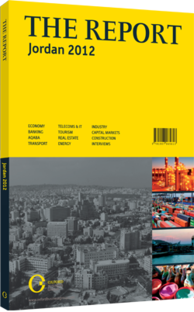Treating the region: Medical tourism attracts investment to the sector
Ranked by the World Bank as the world’s fifth-strongest medical tourism destination – and the best in the MENA region – Jordan is known for having an accessible, affordable and high-quality health care system. Although regional unrest has recently reduced the inflow of patients to Jordan, a rising number of Libyan medical tourists bodes well for 2012.
REGIONAL HUB: “In 2010 around 90% of Jordan’s medical tourists came from the MENA region,” said Dr Awni Al Bashir, president of the Private Hospitals Association (PHA). Libya sends the most patients, although other significant contributors include Iraq, Yemen, Syria, Sudan and Gulf states. However, leading providers also take significant business from beyond the Arab world. “Each year we get around 140 patients from the US, the UK and Canada,” said Dr Mohammad Ghazi Serhan, director of medical affairs at the Arab Medical Centre.
The private sector reaps most of the benefits from the country’s medical tourism. In fact, private sector care facilities report that the non-Jordanian side of their business is growing. For example, some 40% of patients receiving treatment at the Al Khalidi Medical Centre are foreign. Patients are coming to these centres for advanced treatment in fields such as cardiac examination and operation, kidney transplants, in vitro fertilisation and cancer treatment.
MEETING DEMAND: The private health care sector may be insufficient to sustain growth in the health tourism industry. In February 2011 Al Bashir told local media that hospitals cannot cope with the rising number of patients seeking treatment and there is a need for more investment in the sector. Since then, investors have demonstrated considerable interest in the sector, with many new private centres founded in 2011.
With medical tourism accounting for 4% of GDP in 2010, the government wants to support the growth of private sector care. Dr Taher Abu Elsamen, general-secretary at the Higher Health Council, told OBG that it is easy to get a licence to establish a new facility, providing that one of the founding partners is a doctor.
INFLOW FROM LIBYA: Medical tourism was negatively affected in 2011 by political unrest in the Middle East. An estimated 200,000 medical tourists came to Jordan in 2010, but this figure fell by 10% in 2011 to 180,000, Al Bashir told OBG. Yet the trend has seemed positive again in recent months, with large numbers of Libyan medical tourists coming to the country during the second half of 2011 and early 2012. Flows began to increase in the summer, and by the end of the year there were up to 1000 patients arriving every day.
Jordan is thought to be receiving the lion’s share of Libyan medical tourists. According to official Libyan statistics, 48,000 came for medical treatment in the year up to February 2012, but the actual number could be significantly higher. The private sector is absorbing the bulk of the demand. “Libyans who come to us are mainly looking for services like in vitro fertilisation procedures and cardiac and oncology treatments,” said Serhan. Strong demand from Libyan medical tourists is expected to continue over the long term.
The inflow of Libyans also presents something of a challenge to Jordan’s health care sector, however. In February 2012 the PHA complained that the Libyan government, which has agreed to pay for its citizens to receive treatment in Jordan, had not sent the funds and that the agreed price had not been fair. However, the Libyan government has since agreed to adjust the rates. As of mid-March 2012, it had paid $30m of the $80m owed as of the end of January 2012, with the Libyan Health Ministry assuring its Jordanian counterpart that the balance will be paid in due course.
Just as Jordan is working to bring in medical tourists, so it is pushing to export its medical expertise to its neighbours. Indeed, Jordan is already the region’s top exporter of pharmaceuticals (see Industry chapter), There is also scope for increased bilateral cooperation within the country’s growing private health care sector. As well as providing new economic opportunities, such activities complement Jordan’s drive to sustain and enhance its reputation as a world leader in health care.
You have reached the limit of premium articles you can view for free.
Choose from the options below to purchase print or digital editions of our Reports. You can also purchase a website subscription giving you unlimited access to all of our Reports online for 12 months.
If you have already purchased this Report or have a website subscription, please login to continue.

